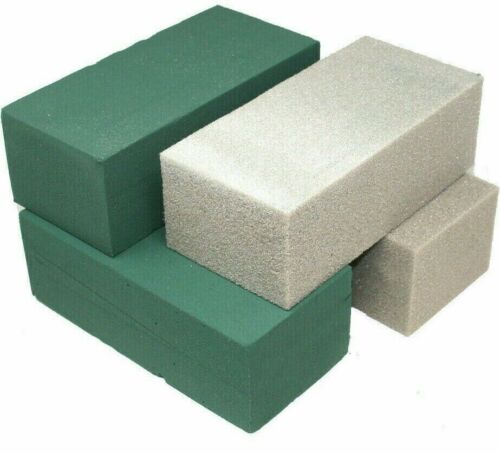
What is a floral foam?
Flower foam is well known, having been available for decades, ever since, it’s been an essential tool in floral design by making the process of arranging flowers simpler, speedier and more creative. It is supplied as a block of dry, solid foam with open-celled structure. The use of phenol-formaldehyde (PF) or urea-formaldehyde (UF) foamed products as supports for cut flowers have been in common usage in the floral industry for many years; that is due to their uniform or homogeneous nature, consisting of a single type of hydrophilic or wettable foam.
Foam properties desired are rapid wettability, good water retention, proper color, a crisp texture and ease of flower penetration, with good support and retention of the flower stems by the foam.
Floral foams are hydrophilic, capable of high water absorption as well as having the extremely low swelling ratios (around 1%), implying the high open-cell ratio and density of RPUFs. The RPUFs with the properties of high water absorption, low swelling ratio, and suitable density are favorable for the application of floral foam.
Polyurethane floral foam synthesis
Polyurethane foams, however, tend to be hydrophobic by nature, thus limiting the amount of water the sponge will retain. More hydrophilic polyether polyols, when used increase the hydrophilicity of the foam tend to uncontrollably increase the rate of reaction creating an extremely hot exotherm which burns the foam during its preparation. The problem exacerbated when a high functional polyol is used to prepare a rigid foam.
The open-cell RPUFs were synthesized through a one-step method. Typically, open-cell RPUFs can be synthesized by utilizing cell-opening agents, such as 1-butanol or the lithium salt of 12-hydroxystearic acid (Li-12HSA). In other words, an open-cell, hydrophilic polyurethane foam having a high compression strength and a high water retention capacity which foam is suitable for use as a substrate for cut flowers and which foam is obtained from reaction of a polyisocyanate and a mixture of two different type polyhydroxyl compounds while in admixture with a surfactant and a blowing agent (water is usually used as a blowing agent). In fact, the surfactant helps ensure that the final flower foam block is not hydrophobic and is able to soak up water. As a result, generally silicone-based surfactants are used in the formulations. It has to be noted that water absorption is usually associated with the open-cell ratio and density.
Although the hydrophilic foams obtained by this process have a very high-water absorption capacity, their capacity for retaining water, is below 30%. For this reason and because of their low compression strength of about 200 p/cm which is due to their low density, the foam resins obtained are hardly suitable for use as substrates for cut flowers.
This process for the production of open-celled, hydrophilic polyurethane foams which have a density of from about 15 to about 40 kg/m3 from a polyisocyanate, polyhydroxyl compounds, water and- /or other blowing agents, emulsifiers and optionally other auxiliary agents and additives, which is characterized in that the polyhydroxyl compounds used are mixtures of a about 50 to about 90 percent by weight, based upon the total quantity of polyhydroxyl compounds, of polyhydroxyl compound with an OH-number from about 300 to about 1820, in which at least about 50% of the hydroxyl groups are primary hydroxyl groups and/or which contain tertiary amino groups in the molecule.
In the foaming process, the slow-gelling reaction rate allowed the bubbles to easily escape from the matrix before it forms the firm struts. Finally, an equilibrium was reached between the gelation and blowing reaction, leading to the formation of RPUFs with uniform cell size. After the necessary curing time, the foam can be easily cut into blocks of the desired size and shape, which will deliver its performance uniformly.
Types of polyurethane floral foam
Generally speaking, there are two kinds of foam for floral applications: wet and dry foam.
Wet floral foam is used with live flowers that need water, while dry foam is used for artificial flowers and the occasional craft. Wet foam can keep flowers hydrated for as much as four days (without additional water), is easy to transport, holds flowers tightly in place, and is incredibly easy to use.
Dry flower foam is very dense and heavier than wet. On the other site, density of wet flower foam is not as compact or dense as dry foam, because the wet foam must have open space for water. It also has to be mentioned that wet foams come in green colors and dry foams are normally gray or brown.

To sum up, it can be noted that one of the most challenging applications of polyurethane in terms of processing as well as formulation design is the manufacture of floral foam, a rigid, moulded, open-cell. Moreover, the RPUFs with the properties of high water absorption, low swelling ratio, and suitable density are favorable for the application of floral foam.






